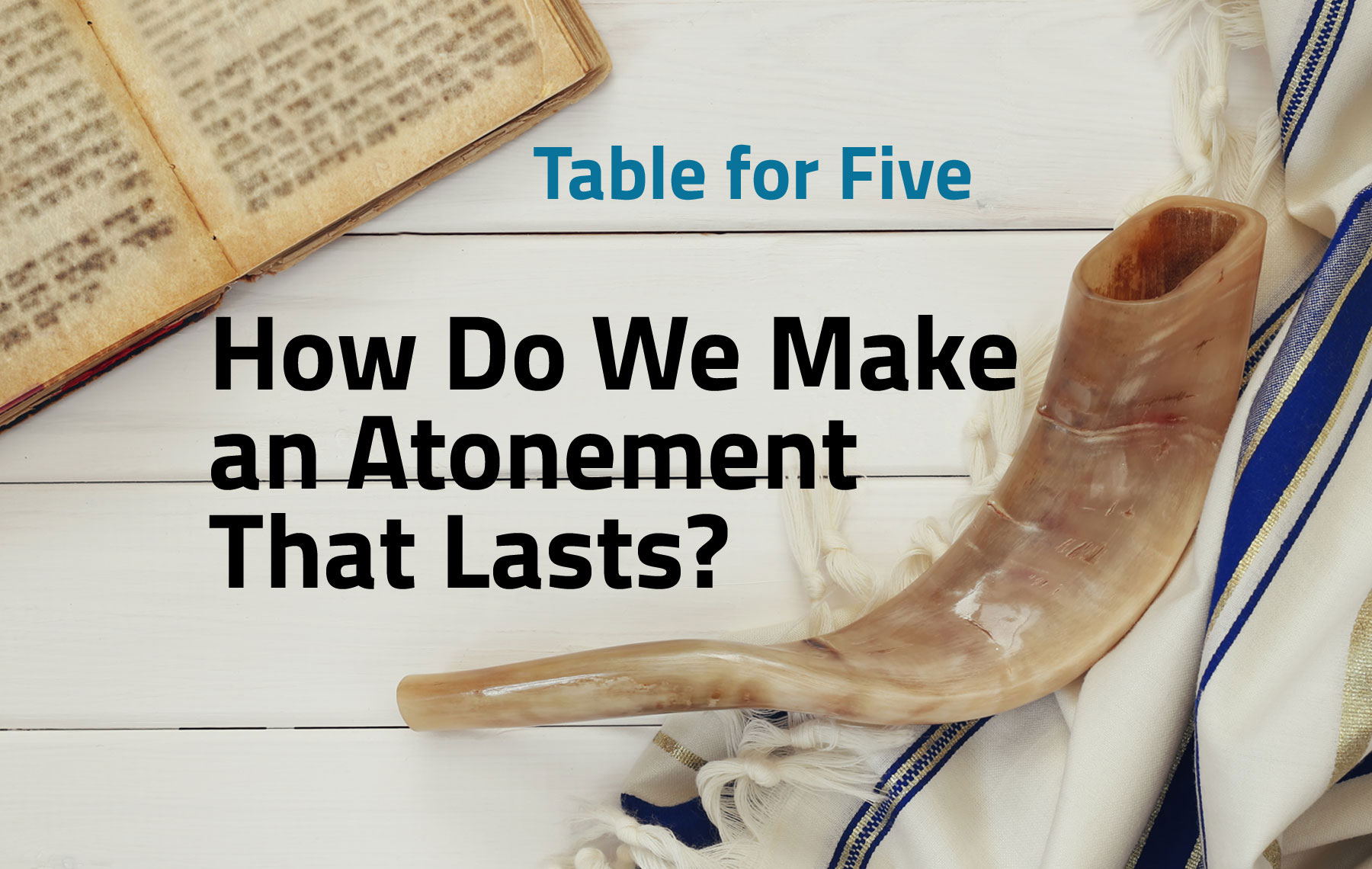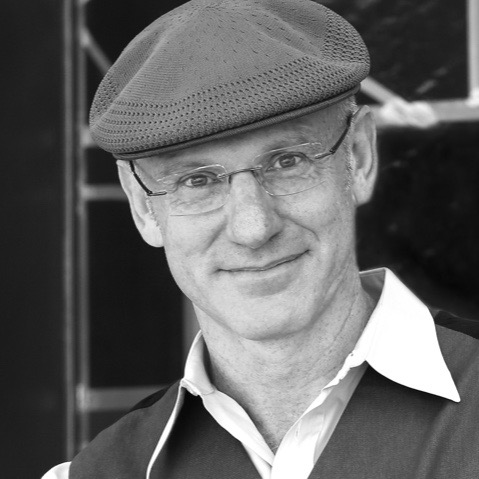
Edited by Salvador Litvak, Accidental Talmudist
One Question, Five Voices: How do we make an atonement that lasts?
Miriam Yerushalmi
Director of SANE (Soulful Advice for a New Existence); marriage and family counselor; author of the “Reaching New Heights” books.
Yom Kippur is such an awesome holy day that some people have the misconception that God expects only perfection from us and judges us accordingly. Not so! God wants us to do teshuvah, repentance, to return to the truth. HaShem is not focused on our reaching perfection; it’s the process of teshuvah that counts.
To be at peace with this process of becoming our truest self is the best aid to successful positive change. The way the land of Israel was acquired — territory by territory, piece by piece — teaches us how to achieve our best selves: step by step.
Yes, teshuvah revolves around minimizing our faults as much as possible, but this involves forgiving ourselves with mercy and developing ourselves with joy.
On Yom Kippur, HaShem bestows upon us extra strength to accomplish all of this and more.
The Yom Kippur prayers feature the verses listing the Thirteen Divine Attributes of Mercy. With this recitation, not only do we beseech HaShem to judge us with compassion through the medium of these attributes, but we also focus on emulating these holy attributes — remembering always that they are qualities of mercy, not strictness. HaShem wants us to treat ourselves with the same compassion we hope to receive from Him. With our own compassion, we arouse God’s compassion. This frees us from the toxic burden of guilt that can lead to stagnation and worse.
With peace, mercy and joy, we can reach our Divinely orchestrated potential.
David Sacks
The Happy Minyan of Los Angeles
Most people approach teshuvah — or change, or even better, return — in the following way: These are the things I need to do more of, and these are the things I need to do less of. Makes sense.
The problem is, when we focus only on our actions, it often doesn’t work. Maybe it does in the short term, but usually not over the long haul. Why? Because before I examine my deeds, the first thing I need to decide is who it is I want to be. Once I decide with all my heart that this is the new me, the choices I make will be different.
How do you know? Because you yourself will want them to be different. Because your old behaviors will be inconsistent with who you are now.
This is one of the cornerstone teachings of the Baal Shem Tov, which is you are where your thoughts are. Imagine you want to go to a new place. There are two ways to get there. The first way is to lug all your belongings there. The second, easier way is you just go there and then send for your stuff. The first process is extremely labor intensive. The second process is much easier. I just pick the place I want to go and there I am.
Use these precious days to craft that vision of the better you, and then let your deeds paint the portrait of who you are now.
Shaindy Jacobson
Director of the Rosh Chodesh Society of the Rohr Jewish Learning Institute
It is said, to err is human, to forgive is divine. Each of us has the capacity to fuse the human with the divine.
You may be familiar with these words penned by Ernest Hemingway in “A Farewell to Arms”: “The world breaks everyone and afterward many are stronger at the broken places.”
Yes, while life may break us, it’s what we do with the pieces that matters most. Think of atonement as a circle. In fact, the word for “forgiveness” in Hebrew is mechila, which is related to the word machol, meaning “circle.” Life is a circle, encompassing all our relationships, deeds and experiences. With the occurrence of a negative action, the circle is broken. With your atonement, the break is mended.
When the circle is again complete, you are embraced by the wholeness of God and all His creations, of which you are, indeed, an integral part.
The gift of lasting atonement is the birth of hope. It takes far greater effort to rebuild a relationship after it was fractured than to build it in the first place. But when you succeed, the rebuilt entity is so superior that it can never be broken again.
As Rabbi Menachem Mendel of Kotzk said, “There is nothing so whole as a broken heart.”
Rabbanit Alissa Thomas-Newborn
B’nai David-Judea Congregation
The Yamim Noraim are a time of heightened spirituality and self-reflection that stand out from the rest of the year. But how do we carry the energy of these holy days with us once Yom Kippur ends?
A beautiful practice gives us insight into how we can make our atonement lasting. The Rama records that immediately after Yom Kippur ends, we begin building our sukkah for Sukkot. When our preparation for Sukkot is on the heels of Yom Kippur, one mitzvah is juxtaposed with another. Why do we do this? Because the sukkah reminds us of what God put us in the world to do, of what we were saved for at Yom Kippur. And if we are clear on this mission, we can more easily brush off the temptation to fall back into our old ways.
As Jews, we are called to build “sukkat shalom” — God’s dwelling place of peace in this world. A sukkah is warm, welcoming and accessible. It represents God’s clouds of glory, God’s loving presence that led us in the desert and that continues to guide us through our lives today. If we are busy with the holy work of creating peace, wholeness, warmth and awareness of God, our atonement will not only be lasting, but expansive, constructive and worthwhile. And so, as Yom Kippur ends, let’s ask ourselves, what does it look like for each of us to build God’s “sukkat shalom”?
Rabbi Tzvi Freeman
Chabad.org
My pal Sal wants to achieve everlasting at-onement. I figure he must mean being at one with God, since God is the only one who is everlasting.
I mean, you know those moments of bliss in life that you want to hold onto forever — and then they’re gone as though they never were, often with more pain than gain. Because nothing in this world is ever everlasting.
But a mitzvah is not of this world. A mitzvah is a glistening droplet of infinite light extracted from the divine. We bring it alive in our world, through a partnership of divine providence and free will. Yet, even as this mitzvah plays out through our hands, it remains a mystery beyond our grasp.
And so the moment of a mitzvah is a moment of at-onement everlasting. A moment with family and guests at my Shabbos table. A moment of binding myself with my God with those black leather boxes. A moment of a helping hand, a kind word, an ear lent to a broken heart on behalf of my Creator. A moment of swimming in the endless waters of the wisdom of His Torah.
If I could make every moment of my life into a mitzvah moment, I would always be at-onement. But even if I fall away and disconnect from that eternal source — may God protect me from myself — that moment of my life remains my everlasting moment of at-onement. Nothing in this world or the next can ever take it away. It is, indeed, the only thing I truly own.























 More news and opinions than at a Shabbat dinner, right in your inbox.
More news and opinions than at a Shabbat dinner, right in your inbox.